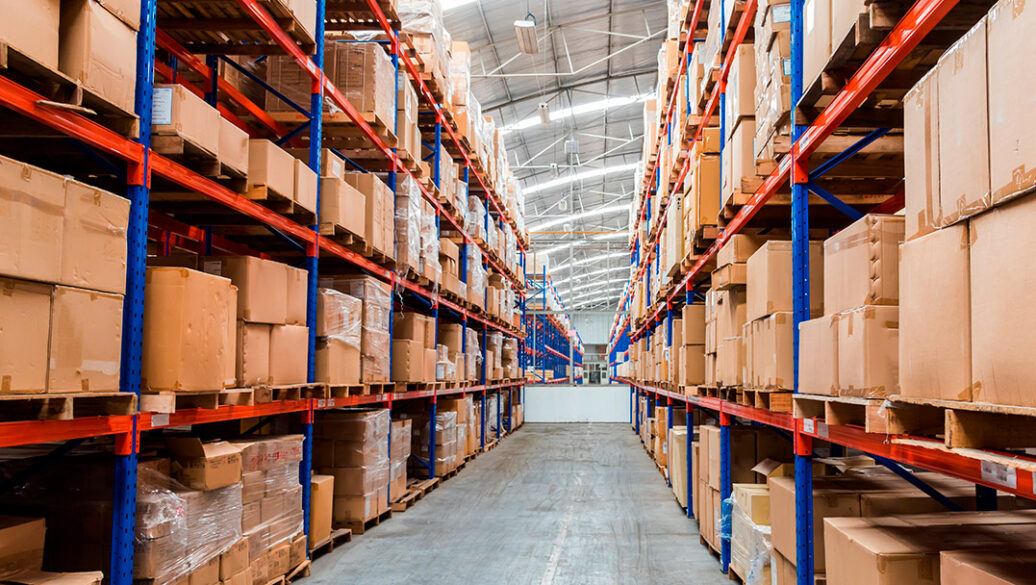Warehousing strategy has become a financial and competitive lever in today’s global trade environment. For companies moving goods across borders, choosing the right storage model influences cost control, working-capital efficiency, and operational performance. While often used interchangeably, tax-free and bonded warehousing serve distinct functions and are designed for different trade requirements.
Bonded warehouses are government-approved facilities where imported merchandise can be held without paying duties or taxes until goods formally enter the domestic market. Tax-free warehouses, by contrast, are typically located within Foreign Trade Zones (FTZs) or designated customs areas, allowing goods intended for export or cross-border movement to be held duty-free under more flexible terms.
Selecting the appropriate model can strengthen supply chain resilience and improve performance across key areas, including:
- Working capital preservation and cash-flow stability
- Supply-chain agility and inventory positioning
- Duty and tax timing
- Response to market fluctuations and trade-policy shifts
This article clarifies the distinction between the two structures and outlines how each supports different business models and trade strategies.
Tax-Free Warehousing: Features, Benefits, and Uses

Tax-free warehousing refers to facilities where goods intended for re-export or in-transit trade can be stored without duties or taxes being assessed. These facilities typically operate within Foreign Trade Zones (FTZs), areas treated as outside U.S. customs territory for duty purposes.
Key Advantages
The following key advantages illustrate why tax-free warehousing within FTZs can offer operational efficiency, financial flexibility, and strategic benefits for businesses handling export or in-transit goods:
- Complete Duty Exemption: Goods ultimately re-exported do not incur duties or taxes, eliminating rather than postponing charges.
- Faster Inventory Access: Companies can move and manage goods without clearing customs first.
- Streamlined Documentation: Reduced paperwork and simplified entry procedures support faster logistics flows.
- Value-Added Handling: Many FTZs allow other activities such as repacking, processing, and light assembly activities.
- Indefinite Storage Flexibility: Storage periods are generally unlimited, supporting long-term planning.
Best-Fit Users
- E-commerce and high-velocity goods networks
- FMCG companies requiring rapid distribution
- Multi-regional domestic suppliers seeking centralized logistics
- Import-export traders avoid duties on goods moving internationally
- Manufacturers assembling goods for export markets
Bonded Warehousing: Strategic Advantages and Applications

A bonded warehouse is a customs-supervised facility where imported goods can be held without immediate payment of duties or taxes. Beyond its role as a secure storage solution, it provides businesses with the flexibility to align inventory release with market demand, optimize working capital, and maintain regulatory compliance, serving as a strategic tool for managing complex international supply chains.
Key Benefits
The advantages of bonded warehousing extend beyond storage. Companies can strategically defer duties, enhance cash-flow management, and perform limited value-added operations while keeping inventory under strict customs supervision:
- Duty deferral for up to five years, improving liquidity
- Enhanced cash-flow control by eliminating upfront duty payments
- Secure storage under CBP oversight
- Flexibility to hold inventory long-term without penalty [Source: GOV bonded warehousing]
- Ability to re-export goods duty-free
- Limited value-added services such as sorting, labeling, and repackaging [Source: Bonded warehouse supply chain resilience]
Strategic Positioning
Beyond operational benefits, bonded warehouses serve as a proactive tool for market strategy. By holding inventory under customs supervision, businesses can respond quickly to shifting demand, adjust market entry timing, and optimize capital allocation. This controlled flexibility allows companies to position products closer to key markets without immediately incurring duty costs, providing a competitive advantage in dynamic international trade environments.
- Supports global market access without committing capital to duties
- Creates optionality between domestic sale and international distribution
- Aligns duty payments with actual sales cycles [Source: Save on tariffs bonded warehousing]
Best-Fit Users
- Import-export firms handling large or variable volumes
- Manufacturers sourcing international components
- Seasonal or demand-sensitive retailers
- Electronics importers are subject to shifting tariffs
- Food and commodity distributors operating within quotas and seasonal cycles
- Companies optimizing supply-chain durability in volatile markets
Choosing the Right Solution: Tax-Free vs. Bonded Warehousing

To illustrate the practical differences, the table below compares tax-free and bonded warehousing across key operational and financial factors.
| Category | Tax-Free Warehouse (FTZ-Type Facilities) | Bonded Warehouse |
| Duty Treatment | No duties/taxes if goods are re-exported | Duties/taxes deferred until goods enter the domestic market |
| Storage Duration | Typically, no time limit (zone-dependent) | Up to 5 years |
| Geographic Status | Treated as outside U.S. customs territory | Within the U.S. customs territory |
| Regulatory Authority | FTZ authority + Customs & Border Protection | U.S. Customs & Border Protection |
| Ideal Use Case | Export-focused and in-transit goods | Inventory awaiting domestic release or conditional re-export |
| Processing Allowed | Often allows value-added processing, assembly, kitting, and relabeling | Limited to basic handling (sorting, labeling, repacking) |
| Inventory Movement | Can enter U.S. commerce with formal entry; duty applies only then | Must clear the duty to enter the market |
| Cash-Flow Impact | Eliminates duties for export; defers for domestic entry | Defers duties until the merchandise is sold/used domestically |
| Value-Added Operations | Frequently permitted | Restricted and regulated |
| Best-Fit Industries | E-commerce, distribution hubs, manufacturing, export-oriented supply chains | Import-heavy businesses, seasonal retailers, electronics, commodities, duty-sensitive categories |
| Primary Benefit | Duty avoidance + operational flexibility | Capital preservation + customs-controlled storage |
Evaluation Criteria for Your Business
When determining the most suitable warehousing solution, businesses should evaluate key factors such as goals, product types, and long-term strategic planning to align storage choices with operational and financial objectives:
- Business Goals:
Focus on domestic distribution? Tax-free warehousing may simplify logistics.
Engage in import/export? Bonded warehousing provides duty flexibility - Product Types:
High-value items with significant duties benefit most from bonded storage.
Seasonal products align with bonded warehousing duty deferral. Items requiring modification or assembly favor tax-free options. - Strategic Planning: Conduct cash-flow analysis, calculate total landed costs, evaluate internal compliance capabilities, and assess facility location relative to ports or borders
Your warehousing decision influences not only logistics but also financial strategy, market agility, and competitive positioning.
Partner With a Proven Trade Logistics Provider

CTC Distributing supports companies navigating complex duty structures and cross-border distribution strategies. Whether your priority is duty deferral through bonded warehousing or streamlined export operations via tax-free environments, our facilities and team provide secure, compliant support aligned to your growth objectives.
Visit our website to learn more about how our customized warehousing solutions can strengthen your supply chain and cost structure.





